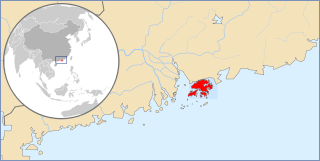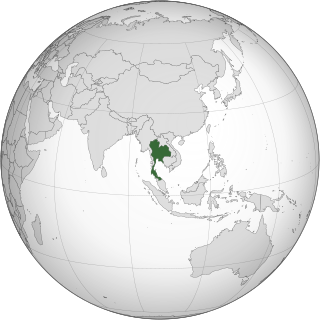
911, sometimes written 9-1-1, is an emergency telephone number for Argentina, Canada, Dominican Republic, Jordan, Mexico, Pakistan, Palau, Panama, the Philippines, Sint Maarten, the United States, and Uruguay, as well as the North American Numbering Plan (NANP), one of eight N11 codes. Like other emergency numbers around the world, this number is only intended for use in emergency circumstances. Using it for any other purpose is a crime in most jurisdictions. Penalties for abuse/misuse of 911 can range from probation/community service to fines/jail time. Offenders can also be ordered to undergo counseling and have their use of telephones restricted or suspended for a period time as a condition of probation.

An emergency telephone number is a number that allows a caller to contact local emergency services for assistance. The emergency number differs from country to country; it is typically a three-digit number so that it can be easily remembered and dialed quickly. Some countries have a different emergency number for each of the different emergency services; these often differ only by the last digit.

The North American Numbering Plan (NANP) is a telephone numbering plan for twenty-five regions in twenty countries, primarily in North America and the Caribbean. This group is historically known as World Zone 1 and has the telephone country code 1. Some North American countries, most notably Mexico, do not participate with the NANP.
A toll-free telephone number or freephone number is a telephone number that is billed for all arriving calls. For the calling party, a call to a toll-free number from a landline is free of charge. A toll-free number is identified by a dialing prefix similar to an area code. The specific service access varies by country.

5-1-1 is a transportation and traffic information telephone hotline in some regions of the United States and Canada. Travelers can dial 511, a three-digit telephone number, on landlines and most mobile phones. The number has also extended to be the default name of many state and provincial transportation department road conditions Web sites, such as Wisconsin's site. It is an example of an N11 code, part of the North American Numbering Plan.

An N11 code is a three-digit dialing code used in abbreviated dialing in the North American Numbering Plan (NANP). The mnemonic N stands for the digits 2 through 9 and thus the syntax stands for the codes 211, 311, 411, 511, 611, 711, 811, and 911. These dialing codes provide access to special local services, such a 911 for emergency services, which is a facility mandated by law in the United States.

The Australian telephone numbering plan governs the allocation of telephone numbers in Australia. It has changed many times, the most recent major reorganisation by the Australian Communications and Media Authority taking place between 1994 and 1998.
Telephone numbers in Japan consist of an area code, an exchange number, and a subscriber number.
Ten-digit dialing is a telephone dialing procedure in the countries and territories that are members of the North American Numbering Plan (NANP). It is the practice of including the area code of a telephone number when dialing to initiate a telephone call. When necessary, the ten-digit number may be prefixed with the trunk code 1, which is referred to as 1+10-digit dialing or national format.

Telephone numbers in Hong Kong are mostly eight-digit. Fixed land line numbers start with 2 or 3, mobile (cellular) phone numbers with 5, 6, 7 or 9, pager numbers with 7 and forwarding service with 8. Since the end of 1989, there have been no area codes within Hong Kong.
The Brazilian telephone numbering plan uses a two-digit area code plus eight-digit local phone numbers for landlines and nine digits for mobile lines. Public utility services use short phone numbers, always starting with 1.

The New Zealand telephone numbering plan describes the allocation of telephone numbers in New Zealand and the Pitcairn Islands.
The area code 671 is the local telephone area code of the United States territory of Guam. It was created with the beginning of permissive dialing on July 1, 1997, replacing Guam's previous International Telecommunication Union country code 671 at the end of permissive dialing on July 1, 1998.

Telephone numbers in Italy are managed by the Autorità per le Garanzie nelle Comunicazioni (AGCOM), a national regulatory authority for the communication industry located in Rome.

The regulation of telephone numbers in Germany is the responsibility of the Federal Network Agency of the German government. The agency has a mandate to telecommunications in Germany and other infrastructure systems.

Thailand's telephone numbering plan in Thailand is managed by the National Broadcasting and Telecommunications Commission (NBTC) in accordance with International Telecommunication Union's (ITU) recommendation E.164.

The 988 Suicide & Crisis Lifeline is a suicide prevention network of over two hundred crisis centers in the United States that provides 24/7 service via a toll-free hotline with the telephone number 9-8-8. It is available to anyone in suicidal crisis or emotional distress. The call is routed to the nearest crisis center to receive immediate counseling and local mental health referrals. The Lifeline supports people who call for their own crisis or for someone they care about.

A telephone number is a sequence of digits assigned to a landline telephone subscriber station connected to a telephone line or to a wireless electronic telephony device, such as a radio telephone or a mobile telephone, or to other devices for data transmission via the public switched telephone network (PSTN) or other public and private networks.
A mobile dial code (MDC) is a grouping of 3 to 10 numbers following either a "#" "##" "*" "**" used to create a short, easy to remember phone number. Historically MDCs were used for repair related purposes by landline and wireless carriers. More recently MDCs have been made available for commercial use. MDCs are dialed just like a regular telephone number. Businesses can send automatic responses upon contact, such as by text message.












